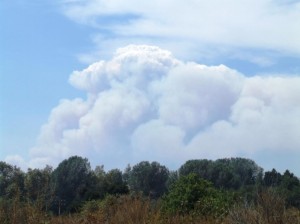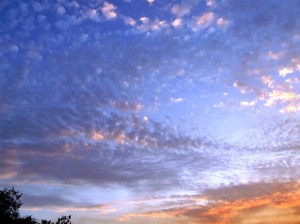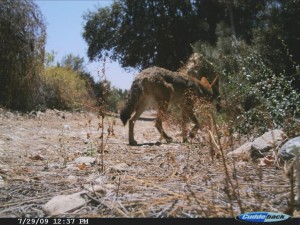An injured Great Blue Heron (Ardea herodias) has apparently taken refuge at the field station lake. Whether this is a past visitor (Cathy McFadden at Harvey Mudd College has sighted one somewhat recently) or a new arrival is unknown. I first noticed it last Friday, October 30th while conducting brush and cattail clearance around one of the lake’s islands. The bird spent the entire day perched on a clump of cattails on the west side of the lake, seemingly taking no heed of the 5 of us rowing back and forth on 3 boats near where it stood. This is unusual behavior for this species when seen at our lake.
On Saturday Nancy Hamlett (Harvey Mudd College) came to snap photos (posted below) and noticed one leg dangling low while the heron was in flight across the lake. Fortunately, flight has not been impaired, so no wing damage. It is able to fish along the small islands’ shorelines and then return to tall cattail clump, where it is safe from coyotes or other predators.
The bird has continued this pattern through today, Wednesday, November 4th. The BFS lake may be just what this heron needs to acclimate to its injury.
The first three photos, taken by Prof. Hamlett, show the heron on its perch and feeding from the island shoreline. The fourth shot was contributed by Yvonne Garcia. The remote cam happened to be on the shoreline in an attempt to capture Western Pond Turtles. Instead, the heron landed right in front of it and provides some close up video action of both feeding and taking flight. On the latter video, the injured leg joint is clearly seen.
Please respect this heron and its current condition.
Tags: Ardea herodias



























